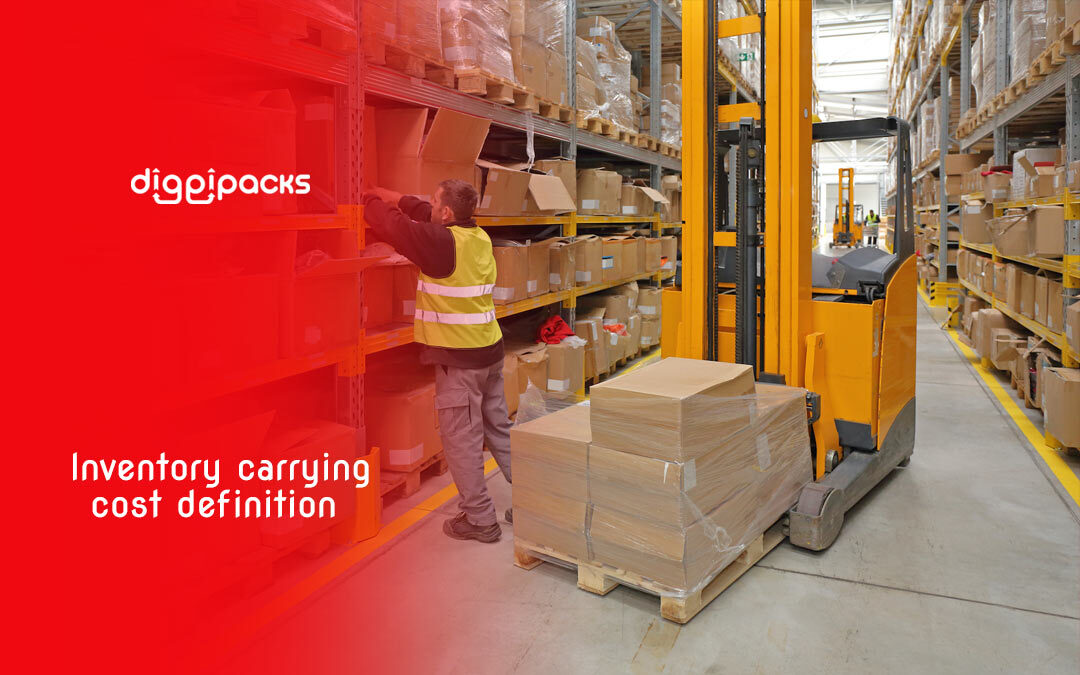Carrying Cost is a component of total inventory costs, and those costs have a significant impact on a company’s revenue. These costs are high for companies that benefit from economies of scale, but low for companies that have a small amount of inventory. This cost is examined by management as part of its assessment of the amount of inventory to maintain, and in this article we will discuss in detail the Carrying Cost, its importance, as well as its components and methods of calculation.
What Are Carrying Costs?
These are the costs associated with the storage of unsold goods, which the company incurs while storing raw materials or semi-finished goods.
As well as finished goods or spare parts in the warehouse, waiting to be used in the future in order to meet expected demand, settle production needs, and protect the facility from depleting the quantity of goods.
Knowing the Carrying Cost also helps prevent costs from spiraling too high, as well as reducing instances of price hikes.
Do you know what is inventory tracking?
Significance of carrying cost

Knowing how much a company’s carrying cost is helps determine how long a company can hold their inventory, before they start losing money on unsaleable items.
Thus the company can know how much they need to buy and sell in order to maintain proper inventory levels. Thus, working to:
- Recover the funds restricted in the inventory.
- Determine the transportation costs incurred by the company.
- Help the company to increase its profits.
The carrying cost in any company usually represents about 15% to 30% of the value of the company’s stock.
And if it exceeds that percentage, then this means that the company is in a bad financial position.
Components of carrying cost
As we indicated, the Carrying Cost is considered part of the total costs borne by the company.
And it consists of a number of basic elements. The following are the most important components that make up carrying costs:
- Depreciation costs, which can be significant if the company invests large sums in automated storage and retrieval systems.
- Insurance costs, which include costs associated with insuring the company’s inventory asset.
- Obsolete Inventory Write-offs, which are the costs associated with writing off inventory that has been held for a long time and has not been sold. This cost can be significant, especially for companies that introduce new products on a regular basis.
- Personnel or labor costs, including warehouse staff costs, such as benefits, salaries, taxes, etc.
- The costs of renting a storage place, and the company must choose the place well and appropriately for the inventory, as this cost may be large if the storage system followed by the company does not guarantee the optimal use of the warehouse space.
- Safety and security costs, including the costs of security guards, monitoring systems, etc., and usually the value of these costs increases as the value of inventory increases.
What Is on Demand Warehousing?
How to calculate carrying cost
As for the method of calculating the carrying cost, it is easily done through the use of a mathematical formula.
Through which the company can calculate the profit it achieves from its inventory.
The following is the mathematical formula used in calculating the carrying cost, which is always represented as a percentage of the company’s total inventory value:
- Carrying cost = (Inventory holding sum ÷ Total value of inventory)*100.
Inventory holding sum is the total cost of transportation, which consists of four basic elements:
- Inventory service cost.
- Inventory risk cost.
- Capital cost.
- Storage cost.
Thus, the mathematical formula used in calculating the Inventory holding sum within the carrying cost accounts is as follows:
- Inventory holding sum = Inventory service cost + Inventory risk cost + Capital cost + Storage cost.
Here are the steps you need to be able to easily calculate those costs based on the mathematical formulas we showed you:
- Calculate the value of each of the four components of inventory cost that we have shown.
- Add these four inventory cost components to get the inventory holding sum.
- Calculate the total value of your inventory.
- Divide the inventory holding sum by the total value of inventory.
- Multiply the division in the previous step by 100 to get the desired percentage.
get to know: Vendor Managed Inventory
Reducing Inventory Carrying Costs with Inventory Management Software

Inventory management software can help reduce carrying costs significantly, with smart tools and automation systems.
That enables you to get accurate data about your inventory and avoid situations of sudden overstocking or shortage of stock.
Which means reducing the costs associated with carrying stock for a long time. Inventory management systems also help you monitor your inventory and accurately quantify in real time.
Thus avoiding cases of inventory loss or theft and Diggipacks can provide you with the best inventory management system.
Which will help you manage your inventory efficiently as well as reduce your inventory carrying costs.
